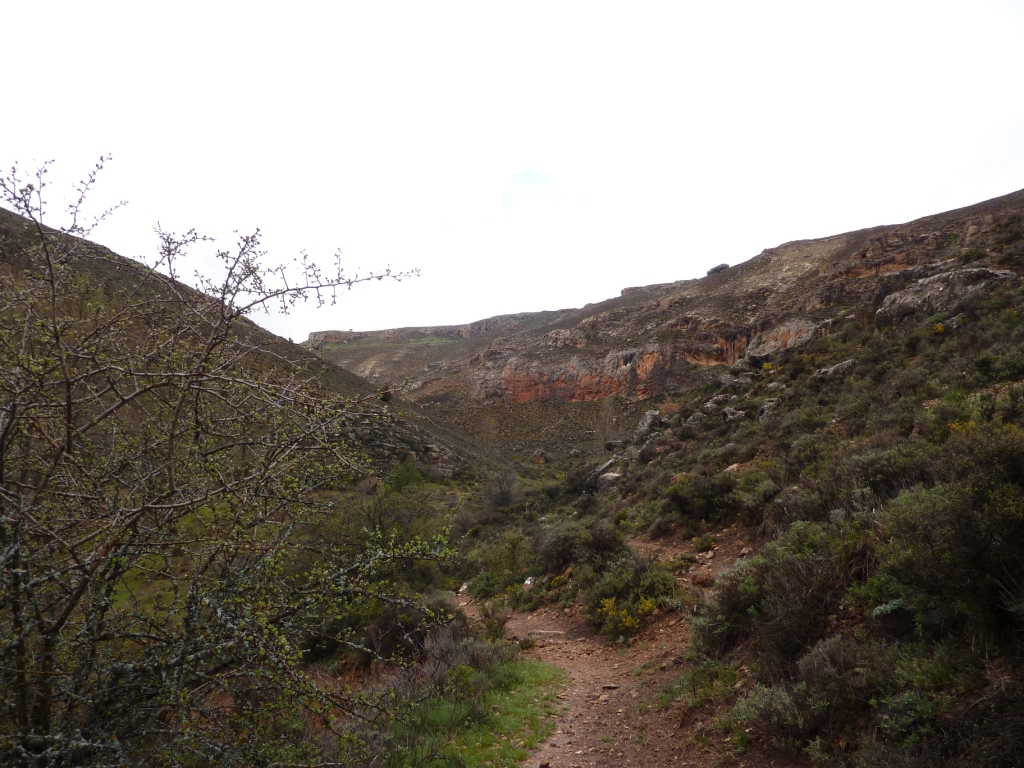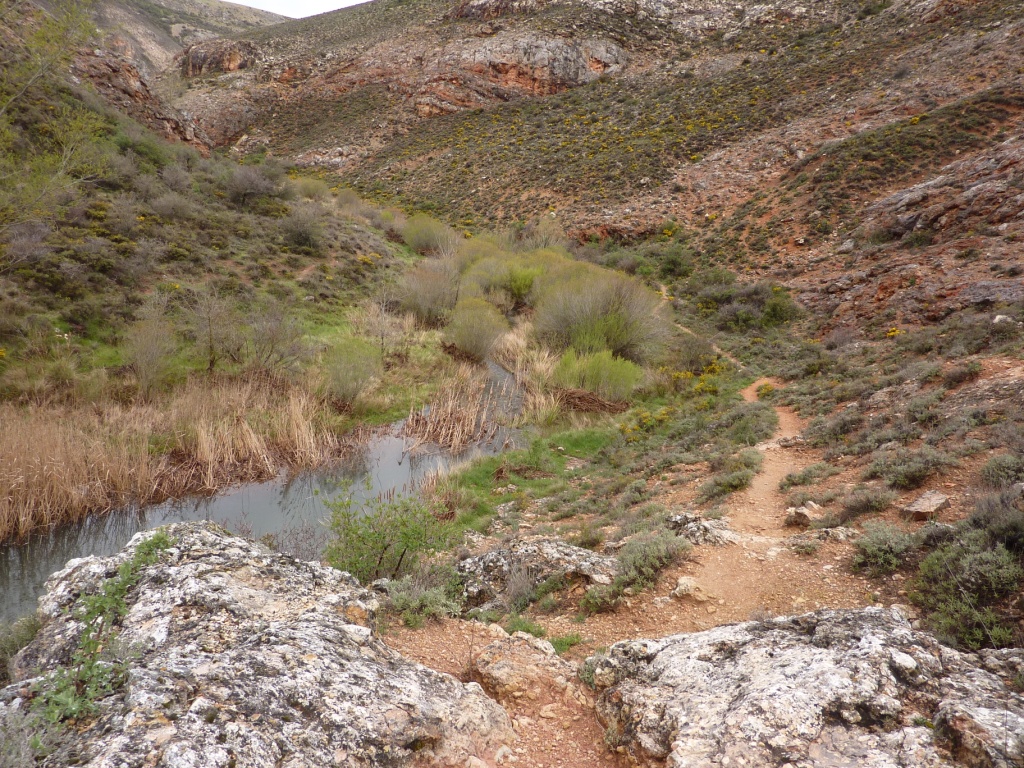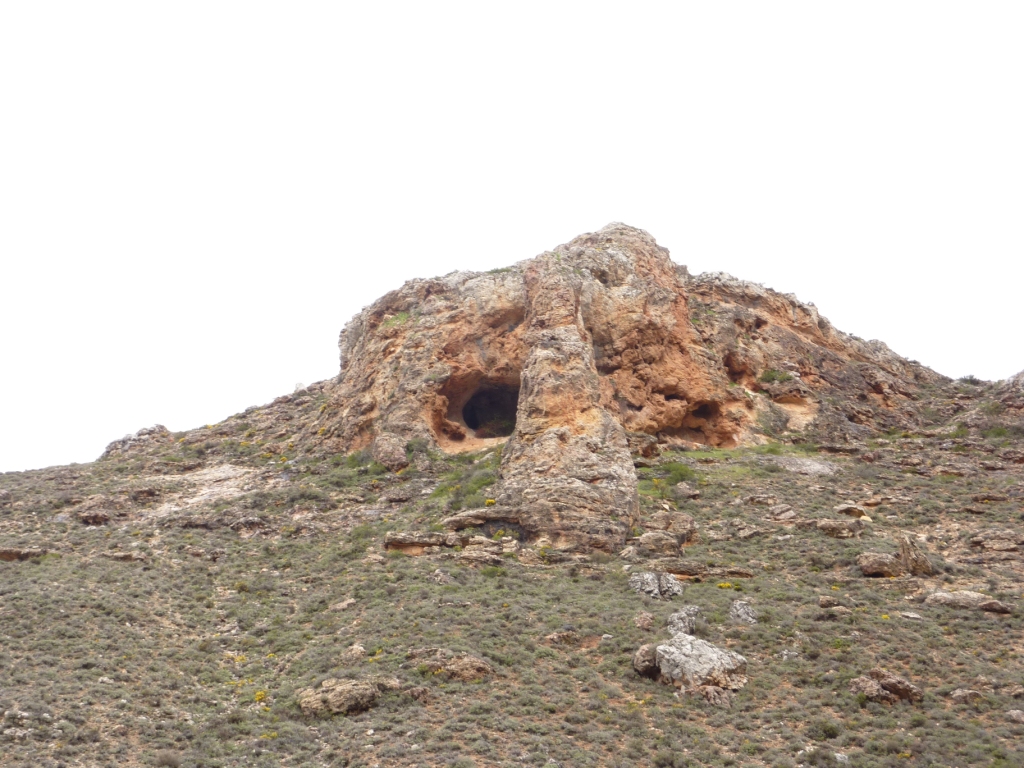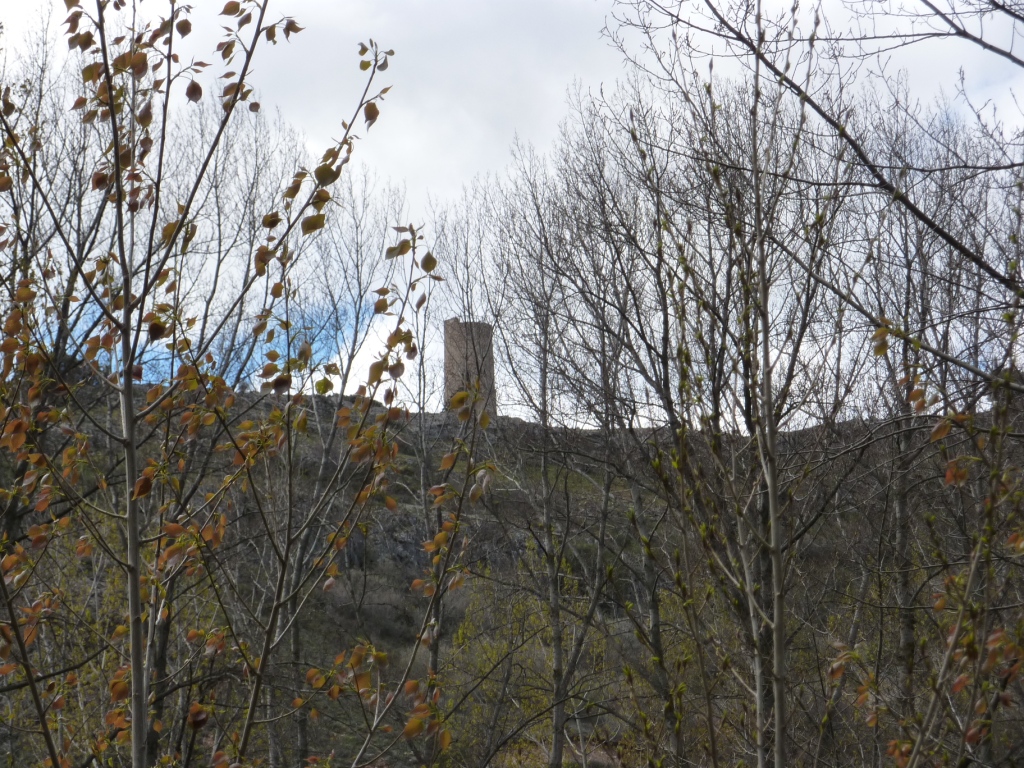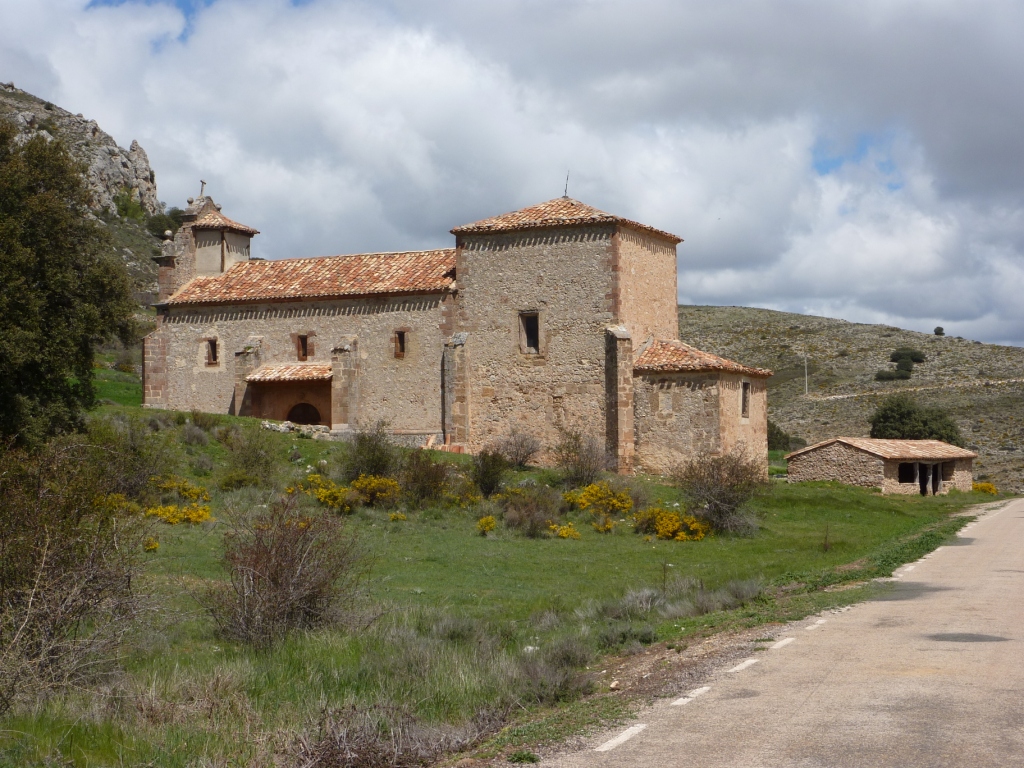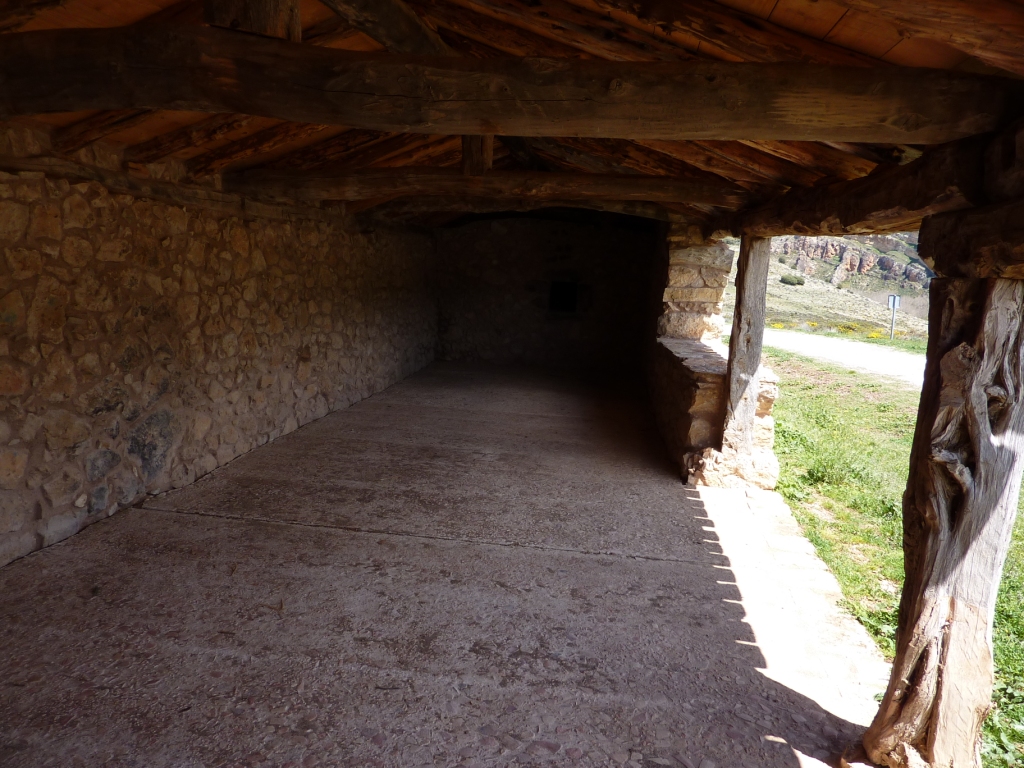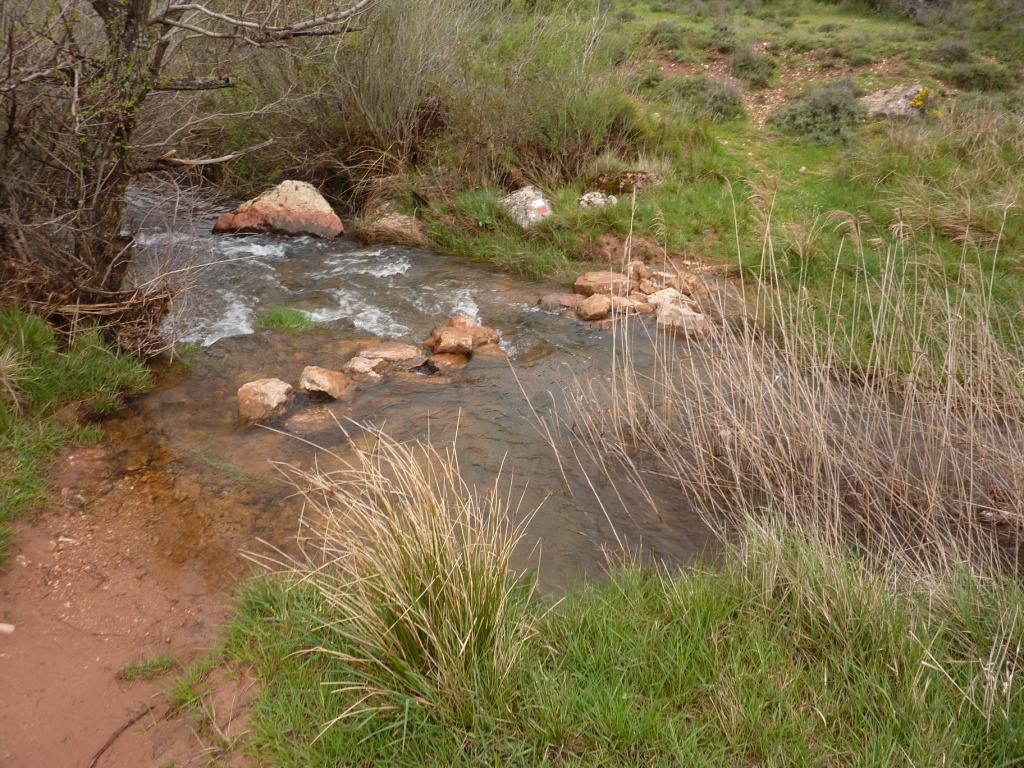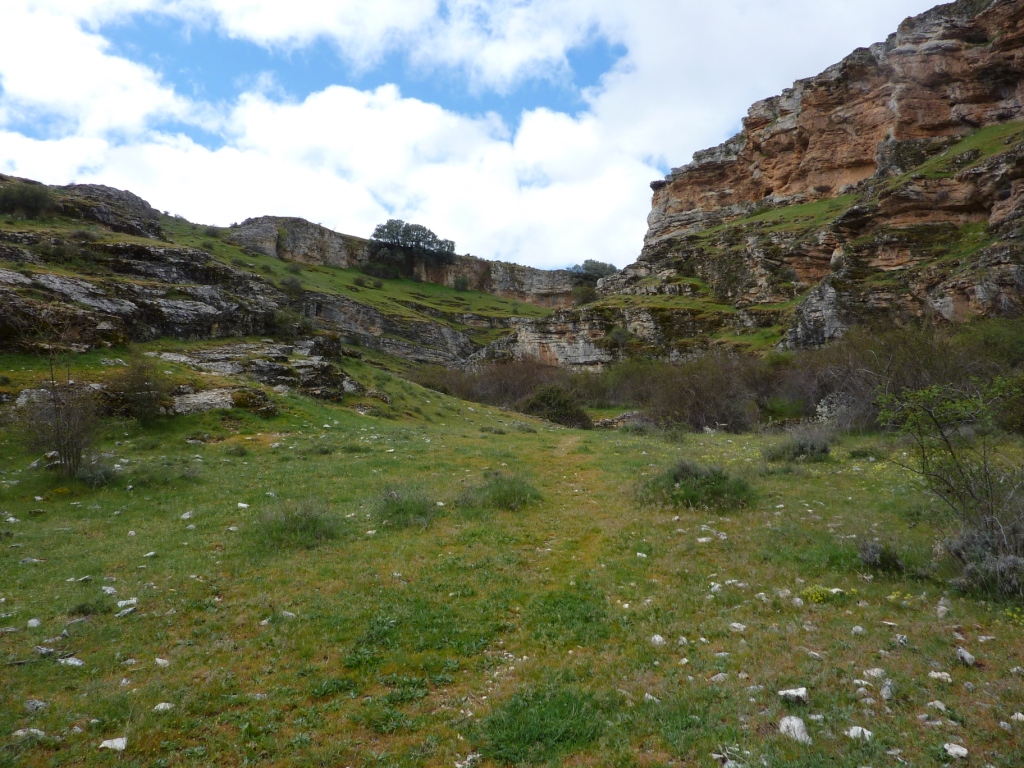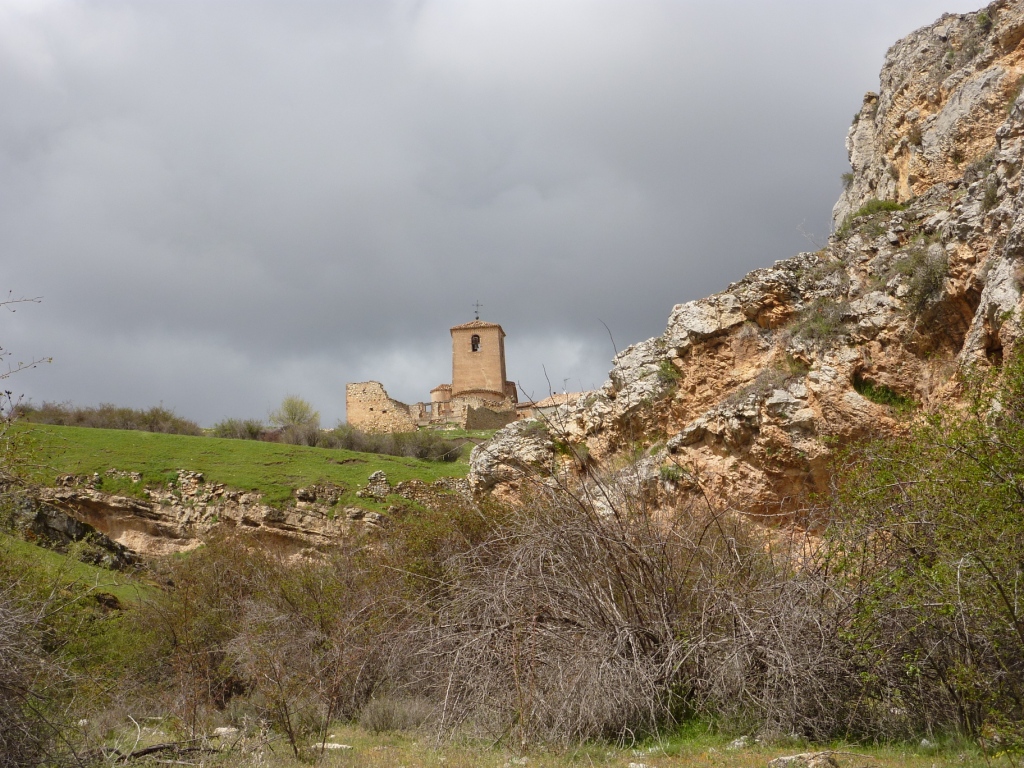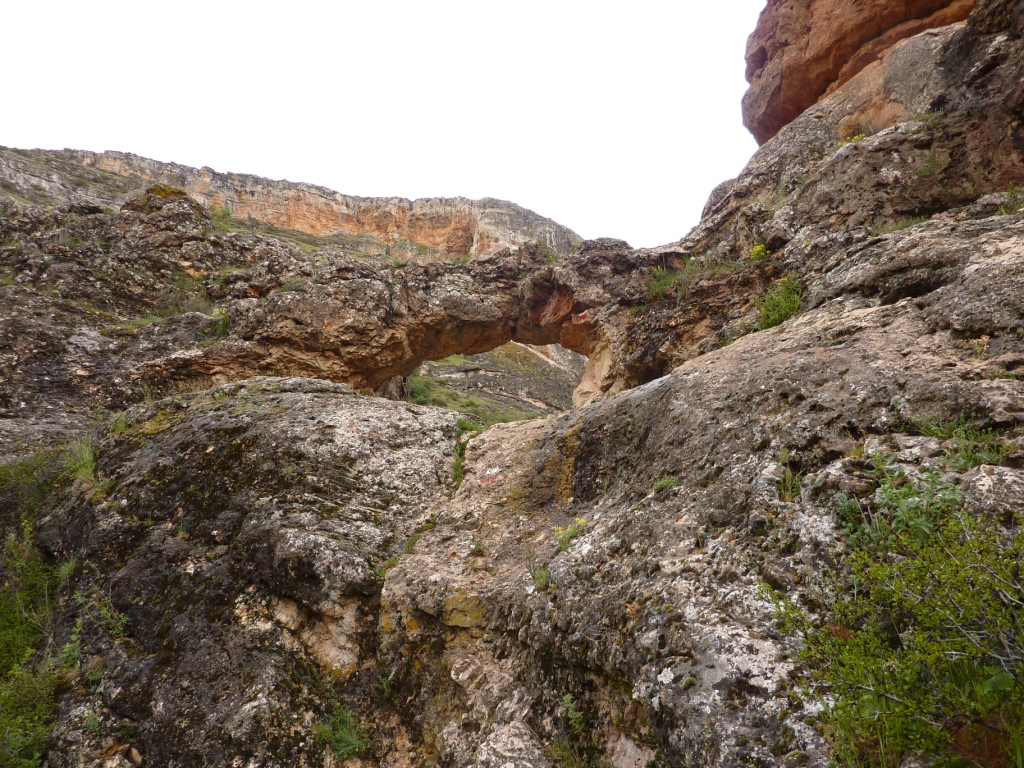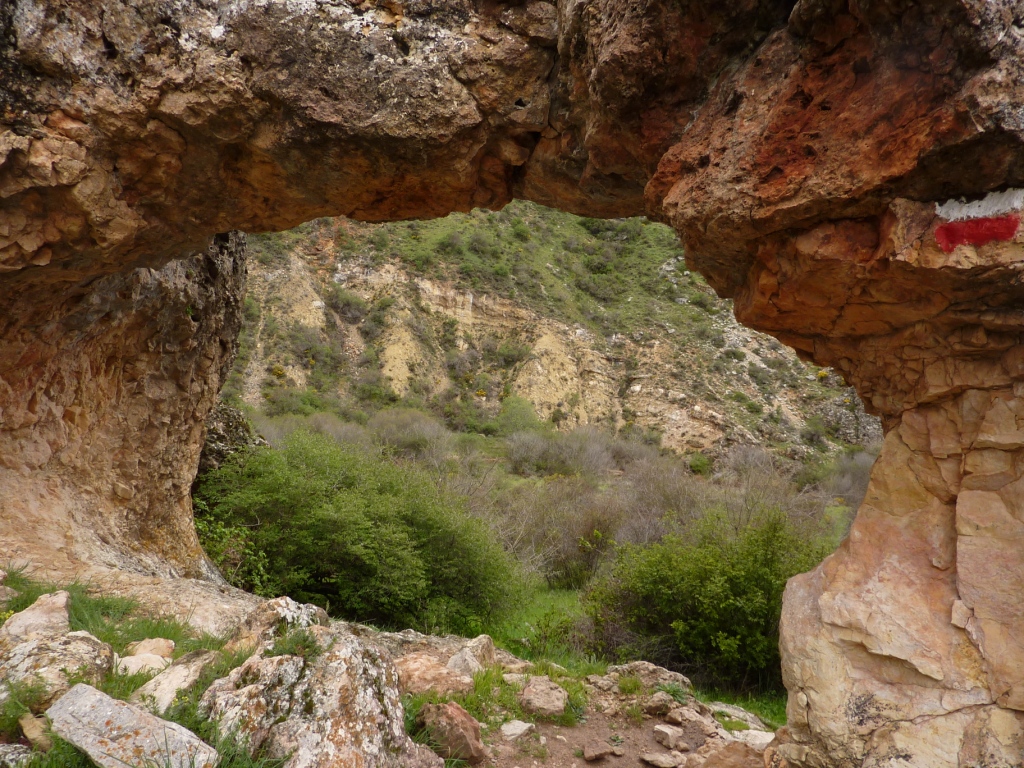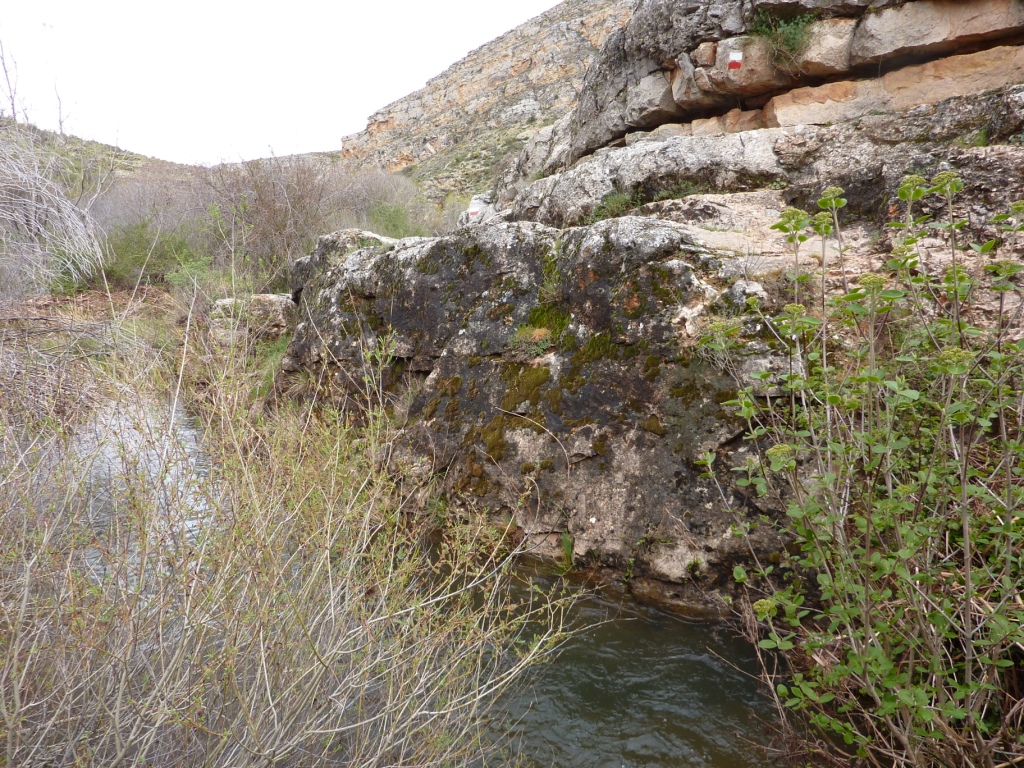The Canyon of Caracena. Ruta de La Lana
Isolation, challenge, awe and majesty.
The Canyon of Caracena is a majestic gorge cutting through the limestone rock for over 7km. Here is a secret landscape. It begins in Tarancueña and ends in the mediaeval village of Caracena. If you want to travel between these villages by car you need to travel about 40 kms because each village is at the end of a road.
I arrived at the Canyon at mid-day after a morning of heavy snow. I had come down below the snow line and welcomed the rise in temperature. At first the path was good, obviously used by shepherds although I was not to meet anyone till much later in the day.
I was pleased that the rain had not swollen the river too much. It must be a dangerous spot when there is a flood for it would rise rapidly. Flash floods are common in Spain and people are drowned every year. They occur when a mass of cold air in the upper layers meets the warm air from below, usually at the end of summer. The Spanish call it “gota fria” and warn against camping too close to rivers in enclosed valleys.
The sides of the Canyon have many huge caves and some of these have significant bronze age remains. More recently, the Arab period of Spanish history has bequeathed the valley an Atolaya, a watch tower. Pilgrims who are fit enough can climb up to and sleep the night in it, so I am told. I have also heard that the entrance is three metres above the ground. I think I remember noticing a staircase on the outside. It comes into view a few kilometres beyond Caracena.
The pilgrim does need to find a spot to sleep on this long stretch of the Ruta de La Lana with no albergues or hotels. It is 43 km between Retortilla de Soria and San Esteban de Gormaz where there is a choice of accommodation. The best place I spotted for sleeping out is on the road which has almost no traffic. It is a well restored shelter beside a sanctuary and is on the camino just before you reach the Atalaya. It was perfectly clean and sheltered me from the fierce cold wind while I had lunch.
I imagine that the shelter is used for the local fiestas and is used on feast days in the winter months when the weather can be very fierce. In Spain places like this are safe to sleep in and nobody will bother you. You may have trouble refusing an invitation to go along and taste the local wine, of course.
The walls of the Canyon press quite close together in several places. Here the river has to be crossed. There are stepping stones which I didn’t trust at all. My balance is not all that good with my rucksack so I preferred just to walk through the river, socks and sandals still on. This I had learned was possible on my first Camino, the Via de La Plata which had fords on many rivers. Those on the Caracena were the only ones on the Ruta de La Lana, apart from one in Alicante. I think in these 7 km I waded through the rio five times.
Alone in the Canyon
The Canyon forms a space shared by river and rock, grasses and gorse, huge eagles and vultures and all those tiny birds which feed on the riverbanks and nest in the reeds. It is a spot where nature gets on with life undisturbed. Perhaps I could have felt I was intruding but such places feel like home to me, like the womb, I imagine, enveloping and safe. I can hear its heartbeat in the running waters and its intake of breath as the wind finds a passage through this channel of layered rock.
In solitude and silence I stop and pray without words: I let myself be absorbed in love and gratitude for life. These are precious moments, especially on this Camino, on which I rarely experienced few “highs”.
Writing this blog, I receive comments from all sorts of people, religious, spiritual and neither, alike. It seems that we all can experience and share such moments. Some call them “spiritual”, others prefer to to say it feels like “being one with nature”, others, myself included , choose to call it” a sense of the presence of God”. I wonder about the language we use to express this deep awareness and appreciation of life, of being itself, of “being here” aware and alert to the enormous mystery of being alive, of beauty and goodness, of loving and being loved, of being sad, or afraid or depressed, of illness and pain and war, of frustrated needs like hunger or loneliness and helplessness. The great religions offer us “language bundles” like software in a new computer and we get hooked on these and recommend them to others. We think in the way the bundles programme us. In Europe and North America the Christianity “bundle” was almost a monopoly and is still championed by a few. For me the Catholic programme is rich and comprehensive because I was born with it in my cot. It does the job of allowing my feelings, thoughts and concepts to find their place in myself and within a large community. Others, sick and tired of all the bugs have gone to the East which is equally rich and they have learned a new language with words like, “reincarnation” and “karma” or practices like Zen and Yoga. We are formed by the language we use but, in the end, the grounding is in the same things, and it is the same awe which lifts us beyond the everydayness of survival, food, money and entertainment to a sense of greater permanence and unity.
My blog is dotted with Catholic, Christian language and some readers who do not speak this language still understand it and I, I hope, theirs. I imagine that we can do this because all religions are speaking about the same things. This viewpoint is still unacceptable in most faith systems including Catholicism. I see this as a defensive position, an insecurity and a lack of Faith.
We are all on a journey and unless we live in a permanent dwam we will have moments of profound awe like I found in this canyon. We can drop these moments or we can grasp them to our hearts and take care of them. They are the seeds of Faith, of every faith.
The Canyon has its delights and one of them is the hole in the rock through which the camino passes. It is a bit of a climb to get up to it: not high, just 2m, but steep. There are one or two of these on this path which is why it is not recommended for bikes. (NB No cyclists!)
At this point the canyon is great fun. There are obstacles but none are severe. This is one of my favourites because there is something symbolic about passing through a rock tunnel, especially one which is natural.
In other places the path clings tightly to the rock leaving little room to walk and sometimes with a drop to the river below.
Perhaps at other times of year the river is lower and the path is not so exciting. There are overhangs which can knock against a rucksack when you are trying not to step in the water. My policy is to step in the water.
I left the valley just before the village and followed a steep path up to Caracena which, I believe has a bar, but I missed it. (It has two streets) The Canyon is majestic and one of the many gems on the Ruta de La Lana.
[mapsmarker layer=”25″]

